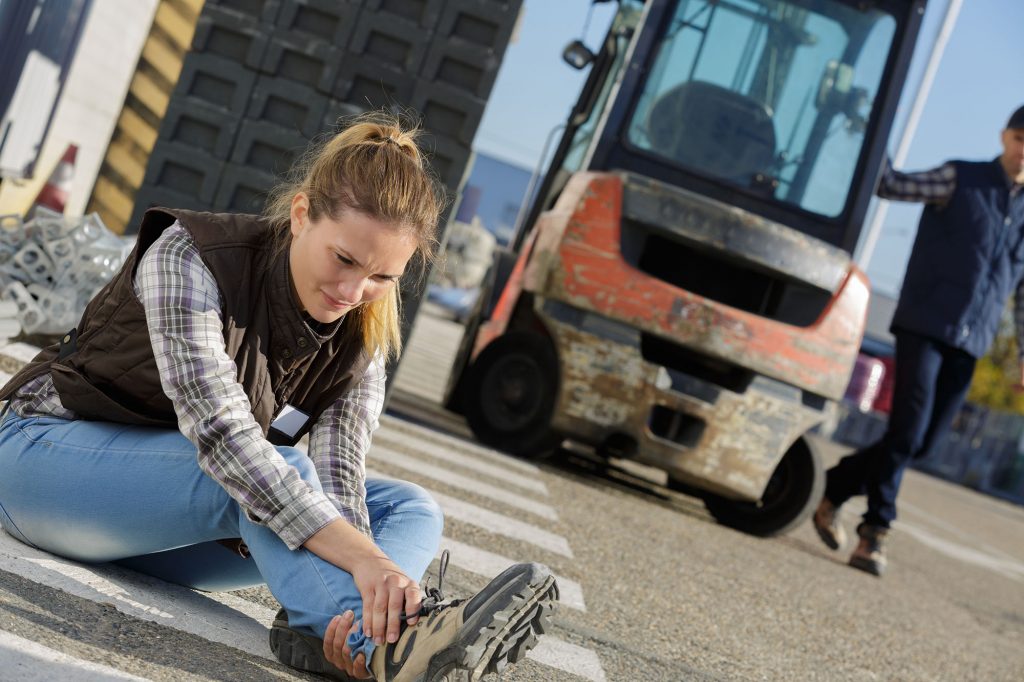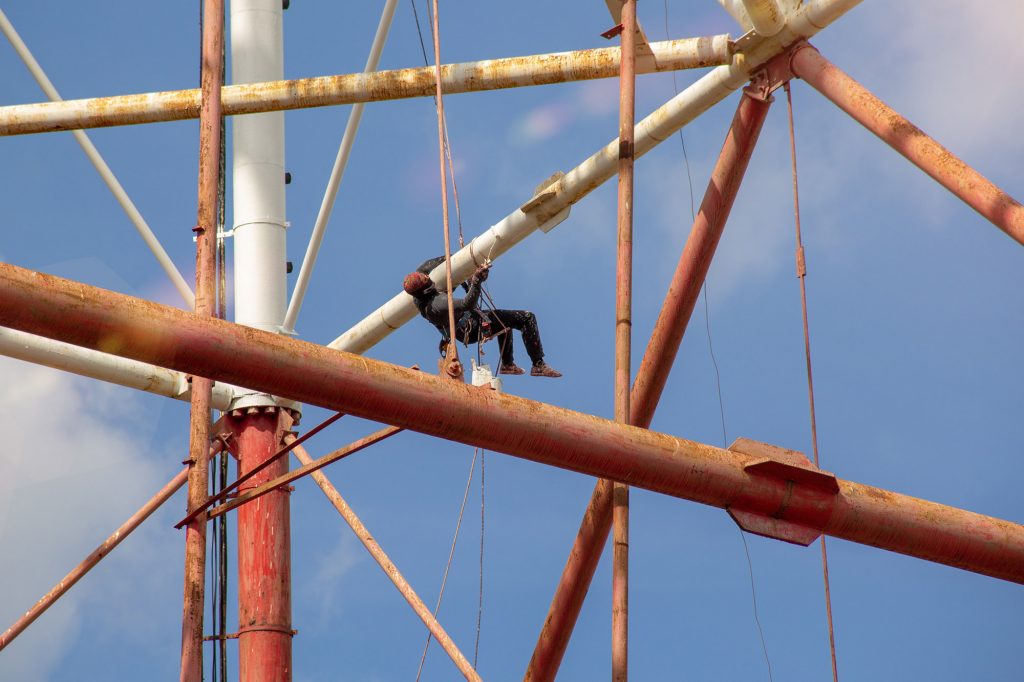Assault At Work — Claim For Physical Violence In The Workplace
If you have suffered a violent physical assault at work, you may have a claim for personal injury compensation. You may also have a case for employer negligence if your work put you in harm’s way. Whoever is responsible, we can help employees receive financial damages for their workplace injuries, and potential mental trauma. Call today on 08082391859^ for impartial guidance and a free claim assessment — we’re here to help.
Workplace assault in the UK
Figures published in early 2020 reveal the sheer scale of violence at work — both in the form of violent verbal and physical assault. There were an estimated 739,000 incidents of workplace violence last year, with just under half of these considered to be physical assaults, a further 54% of these resulting in some form of injury to the victim of the assault. Physical assaults at work account for 8% of all non-fatal workplace personal injuries.
What are the main causes of verbal and physical assault at work?
The most recent HSE statistics on workplace violence clearly show threats of violence have been steadily climbing in recent years, whilst physical violence has stayed somewhat level for the last 10 years. Whilst a threat might not be grounds to sue, even with the emotional turmoil it may bring, it could be symptomatic of a larger issue.
Relationship to the victim
Whilst 58% of incidents of violence are perpetrated by strangers, the remainder are known by the victim. 25% of the total offenders being clients, regulars, or members of the public known through the workplace. 10% are colleagues or workmates. This means, where the offender is known, the workplace could potentially have taken steps to identify and minimise the risk from customers — and arguably staff — in expressing violent tendencies. It could be argued the business or working policies could cause outrage in customers, which staff might not be prepared or properly equipped to deal with.

Customers and narcotics abuse
Whilst there is a perception that the unruliest members of the public who are responsible for workplace violence are under the effects of drugs or alcohol, the truth is to the contrary. Over two-thirds of victims surveyed said that violent customers didn’t appear to be abusing substances or drunk. What’s curious, like with the relationship to the offender, is that the incident seems to occur due to factors from the company itself. One may consider that drunk member of the public to be without reason, and rightly considered dangerous, but statistics suggest that customers are mostly in their right mind. Complaints over customer handling or company policies might be a common cause of such violent outbursts. This means the need for staff training doesn’t stop with identifying and handling customers who appear to “be on something.”
If your workplace hasn’t taken the required steps to risk assess, manage particularly threatening customers or train staff, any combination of which has resulted in an assault, your employer could be negligent. They are then likely to be seen as liable for your injury.
What kind of injuries can you sustain from an assault at work?
The vast majority of personal injuries sustained from physical assaults in the workplace, at over 3/4s of cases, are in the form of black eyes, or minor bruising. These are very likely to be from punches to the face — very in keeping with violent assaults where the offender feels somewhat threatened or aggravated by the circumstances. Other types of injury from physical violence are:
- Scratches — 25%
- Severe bruising — 10%
- Cuts — <10%
- Other — <5%
Whilst most injuries are classified as minor and rarely leave any long-term problems for the victim, the other category also includes more serious injuries. Punctures, stab wounds, broken bones and teeth, dislocations, concussions, internal injuries and head trauma are all recorded every year. 5% of 344,000 physical assaults is still a large number. Regardless of the severity of the injury, such violence at work can take a serious mental toll on victims, it can make them feel unsafe to be at work.
If you feel your workplace has put you put your safety at risk and caused you harm, or you have been a victim of serious physical violence, which is in itself a crime, speak to our personal injury specialists. We can talk you about the chances of success of your case, and your options to fund it, like no win, no fee* compensation. Speak to us on 08082391859^ for a no-obligation discussion today.
What workplaces have staff that are more prone to violence at work?
What might not be a surprise is what industries have workers that experience a higher risk of workplace assault. 9/10 members of staff who are victims of violence work in public services, like heath and social care, as well as education, although much more (50% of cases) are in the former.
A quarter of these are seen in public administration and defence, which included police officers and other protective services. Those who work in a protective service role were 8 times more likely to experience assaults and threats at work than the average risk to a worker.

Other professions that are at risk include managers and proprietors, most commonly in retail and hospitality services. Where staff provide a service and can choose to withhold it, there can friction with customers, especially when they are under the effects of alcohol. Employees that handle valuable items like cash and, say, jewellery, have their risk of workplace assault compounded by the potential of other serious crimes.
The BRC (British Retail Consortium) have reported a growth in severe violence against shopkeepers and other retail workers. The BRC’s report stated that:
“BRC members report that career criminals intentionally use violence and abuse when challenged over stealing. The increasingly common requirements for retail colleagues to age-check and refuse sales, is also triggering increasing violence and threats.”
“Attacks on retail workers are intolerable, and our members are completely clear that keeping their staff safe and providing an environment in which they can work free of fear from threats and violence, is their first priority.”

In terms of who is mostly like to experience workplace assault, reports from CSEW show that 1.5% of working females and 1.2% of working males were victims of violence at work, at least once in the last year.
How can violence and assaults at work be prevented?
Whilst there has been no clear trend in workplace violence since 2009, it is curious to correlate it with a continued implementation of staff training in general. This includes dealing with training for dealing with difficult customers, especially in consumer and public services. This however maybe patchy across sectors, reliant on old and potentially no longer practical methods, as well as barely frequent enough to be useful at the time such training would be required. Nobody can be blamed for failing to remember the acronym for RAGE when a customer is screaming at them. Perhaps the requirement for such training needs to go beyond a checkbox exercise, especially in high-risk workplaces.
Also, in the line of dealing with customers that may be known as violent — as 25% of offenders are known to the victim through the workplace. A clear system of flagging or reporting customers who have known to be difficult in the past might help staff better prepare and mitigate a potential assault. A lot of public services bodies have systems of safeguarding, to protect the vulnerable which is quite ingrained in their working culture, especially in education. It seems like the groundwork for such a system may already be in place in certain workplaces.
However, not all workplace accidents can be prevented, and assaults are no different. One of the main responsibilities of your employer is to minimise the risk to your health as much as possible. Making risk assessments and having a system in place to deal with the potential for violence in paramount in this. If you were injured from an assault at work and your employer didn’t take the required precautions, they may be liable for your personal injury compensation. Call us on 08082391859^ to get expert guidance and to see if you can claim.
What should you do if you’ve suffered from physical violence at work?
The HSE estimates that less than 50% of all cases of workplace violence that ought to be reported to RIDDOR are in fact not — it is an employer’s obligation to report incidents of physical harm and near misses to RIDDOR.
As with all other accidents at work, the incident needs to be recorded in your workplace’s Accident Book. This will create a record of the assault and may help to introduce preventative measures in the future. If your employer is not keen on recording such an event, this could be seen to be negligent behaviour.
It will also help to collect evidence of the assault. Eyewitness testimonials are key to establish the events that lead to the assault. These accounts can be further backed up with footage, as a lot of establishments dealing with difficult customers usually have some form of CCTV network. Taking pictures of your own injuries will help a solicitor identify the correct level of compensation you should be awarded.
It can help to keep a record of an ongoing pain and your emotional wellbeing, as such assaults can leave staff justifiably scared and upset. These can help factor the ongoing cost of your experience and what damages would be appropriate.
How do I make a compensation claim for being assaulted at work?
We can help you establish who is liable for the violence you experienced at work. Then we can calculate the compensation you could be awarded, all free of charge and at no-obligation. Even if you feel partly responsible or unprepared, these can still be signs of employer negligence, and it is important to get impartial guidance before dismissing the chance of financial remedy altogether.
Remember, in personal injury cases there is a 3-year limit in claim time, but where the case goes to the Criminal Injuries Compensation Authority (CICA) you have just two years to make the claim. Even if the offender isn’t convicted, there is still the opportunity to seek compensation.
Why Should You Use Us For You Assault At Work Claim
- We have a team of technical qualifiers who can assess your claim for free. If they feel you have a case, we bring your claim to one of our panel solicitors — that way you don’t run up any legal fees by just asking questions.
- Our telephony team is open daily, and you can leave them a message with our contact form, and they’ll get back to you within a few working days.
- Our panel of workplace injury solicitors can work on a no win, no fee * basis, meaning again, you’re not drumming up expensive legal fees by claiming for your personal injury.
- The team covers the whole of the UK, and you’ll be assigned a panel solicitor depending on if you’re in England and Wales, or Scotland.
- Our panel solicitors have helped thousands of injured people claim compensation.
- We can also help with rehabilitation; arranging physio as part of an entire accident management package.
- Our UK call centre is based in Manchester.
- We fight for the maximum compensation for your work injury, because ultimately your job is to make the company successful, and they should at least ensure your safety in exchange.
- When we calculate your claim amount, we factor in loss of earnings, general expenses and any ongoing costs incurred by the injury, so that you get the highest level of compensation due to you.
- We’re friendly, empathetic and here to help you however we can.
Make a compensation claim for workplace violence leading to injury
Call us, whenever it suits you, on 08082391859^ for a friendly, empathetic discussion with one of our personal injury solicitors** to find out if you do have a claim for compensation.









